Hegmataneh or Ecbatana: Capital of the Median Empire
Ecbatana, literally "the place of gathering," is a city steeped in history and legend. Nestled in the Zagros Mountains on Hegmataneh Hill, it served as the median empire capital and later as the summer capital of the Achaemenid and Parthian empires.
With its origins dating back over 3,000 years, Ecbatana is renowned for its strategic location and rich resources, making it a significant site throughout various empires, including the Seleucid and Sasanian.
Ecbatana city also boasts an array of golden and silver artifacts from the Achaemenid era, including inscriptions attributed to Aryaramna and Arsames, ancestors of Darius the Great.
Among these treasures is the famous golden rhyton. Moreover, attractions such as the Ecbatana Museum and its church complexes further cement Ecbatana’s status as a premier tourist destination.
Today, Ecbatana, present-day Hamadan, stands as a vibrant testament to Iran's ancient heritage. Visitors are captivated by its palatial ruins, intricate water supply systems, and an array of artifacts, including golden and silver treasures from the Achaemenid era.
Recognized as one of the oldest cities in Iran, Ecbatana was inscribed on the UNESCO World Heritage list in July 2024, further cementing its status as a must-visit historical and cultural landmark. Join us to learn everything you need to know about ecbatana in hamadan.
About Ecbatana City
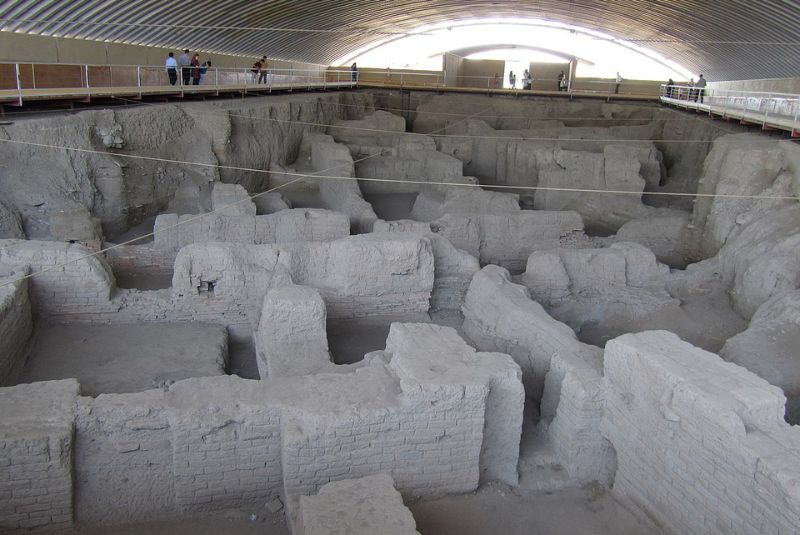
Ecbatana, also known as Tappeh Hegmataneh (due to its location on a hill), is one of Iran's national cultural heritages with a history of over 3000 years. This historic city is located in Hamadan, at the end of Ekbatan Street, within the National Cultural Heritage and Tourism Base of Hegmataneh.
The hill on which Ecbatana is built covers an extensive area of approximately 35 hectares, making it the largest archaeological hill in Iran. It is noteworthy that about 10 hectares of Ecbatana's land were once privately owned but were purchased by the government in 1968-1969 and incorporated into the archaeological site.
World Heritage Registration of Hegmataneh
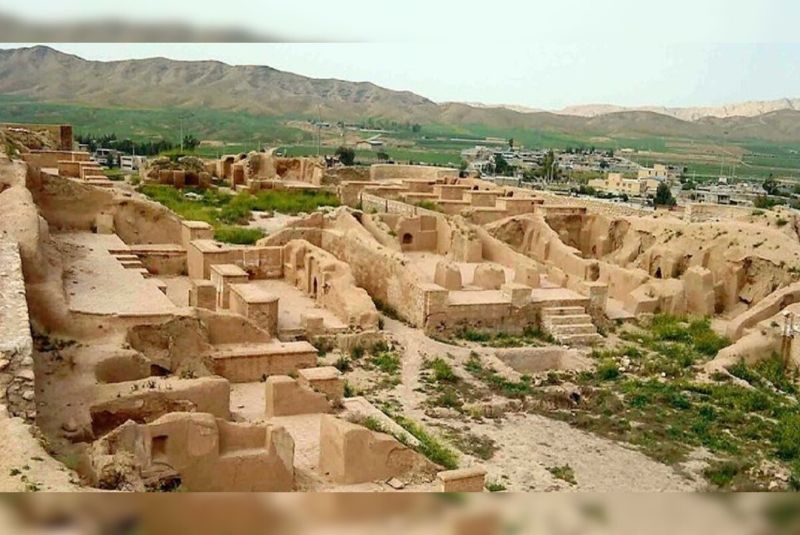
At the 46th World Heritage Committee meeting of UNESCO, held from July 21 to July 31, 2024 in New Delhi, the file for Hegmataneh was approved for inclusion on the World Heritage List.
After necessary revisions suggested by ICOMOS (International Council on Monuments and Sites) and some committee members from Vietnam, Qatar, Kazakhstan, Turkey, Kenya, and Rwanda, Hegmataneh was registered as the 28th Iranian site on the World Heritage List. The registered site covers an area of 75 hectares, with a buffer zone of 287 hectares.
What is the Meaning of Hegmataneh?
Hegmataneh, also known by various names throughout history, is referenced in inscriptions from the era of Darius I as "Hamgmetana" in Old Persian, "A-ga-ma-da-na" in Elamite, and "A-ga-ma-ta-na" in Akkadian.
The Greeks referred to this historic city as "Ecbatana" or "Ecbatanis Partiorum," while in Latin, it was called "Ahmatha." In Aramaic, it was known as "Ahmathan" or "Hamthan," in Armenian as "Akbatn," and in Middle Persian as "Hamedan."
The meaning of Hegmataneh is "the place of gathering," derived from the word "Hangmat." Historians and linguists believe that this location was a gathering place for people even before the Median period, which is the origin of its name.
History of the Hegmataneh City
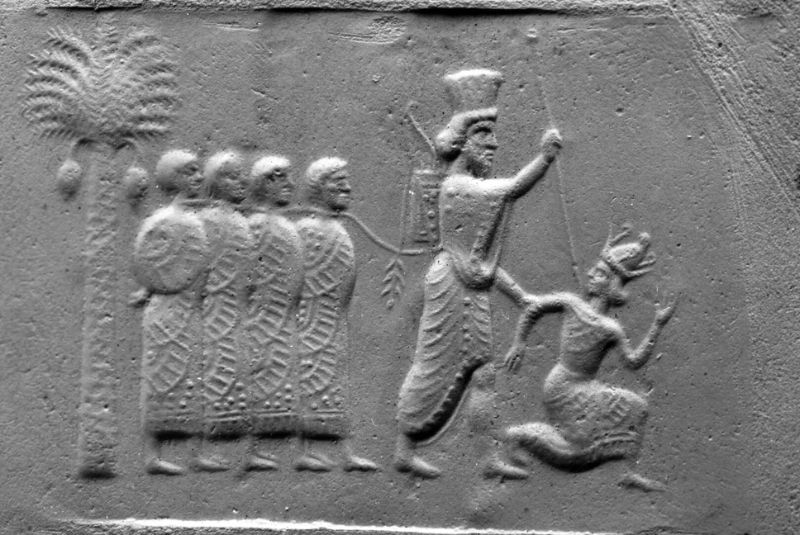
Discussing the historic city of Hegmataneh necessitates a look at its historical journey. The Medes, a group of Aryans, established the first Iranian monarchy by overcoming the Assyrians.
Evidence from ancient Iran suggests that Hegmataneh was founded by the Medes in the 17th century BCE, making it the first capital of Iranian kings. However, this historic city contains remnants not only from the Median period but also from the Achaemenid and Parthian eras.
Median Period
Based on artifacts from ancient Iran, it appears that Hegmataneh was founded by the Aryan Medes in the 17th century BCE, serving as the capital for the first Iranian emperors and kings.
Some experts believe the city comprised palaces, mansions, and remnants from the Median and Achaemenid eras. Greek historian Herodotus noted that the Medes chose Hegmataneh as their capital around 800 BCE, describing it as a royal city on a hill with seven concentric walls, each inner wall taller than the outer.
There are varying theories about Hegmataneh's founding, with some attributing it to the legendary Jamshid or Semiramis, and others to Phraortes, the third Median king. According to the Encyclopaedia Iranica, the Median dynasty was established by Deioces, who chose Hegmataneh as the capital.
Achaemenid Period
After the Medes, Hegmataneh lost its primary importance but became the summer capital of the Achaemenids due to its location on the Royal Road. By the time Darius III faced Alexander the Great, Hegmataneh was in ruins. Darius III ordered the construction of a large palace with 300 treasury vaults protected by eight iron gates.
Parthian Period
A Greek inscription on the Hercules statue in Bisotun, dated 148 BCE, indicates that Hegmataneh persisted until the reign of Mithridates I. Antiochus VII briefly stayed in Hegmataneh in 130 BCE during his campaign to restore Seleucid power in Iran, and Tigranes II occupied the city the following year. The Parthians used Hegmataneh as their summer capital and royal mint.
Hegmataneh Today
Historical and archaeological studies suggest that Hegmataneh and modern Hamadan are the same, despite European explorers initially considering sites like Takht-e Soleyman, Susa, and Kangavar as Hegmataneh.
Coins from the Sassanian era refer to "Ahmathan" as a minting location. The earliest texts mentioning the Medes and their territory are found in the 24th calendar of Charlemagne, referencing "Madai" or "Amadai."
Architecture of Hegmataneh
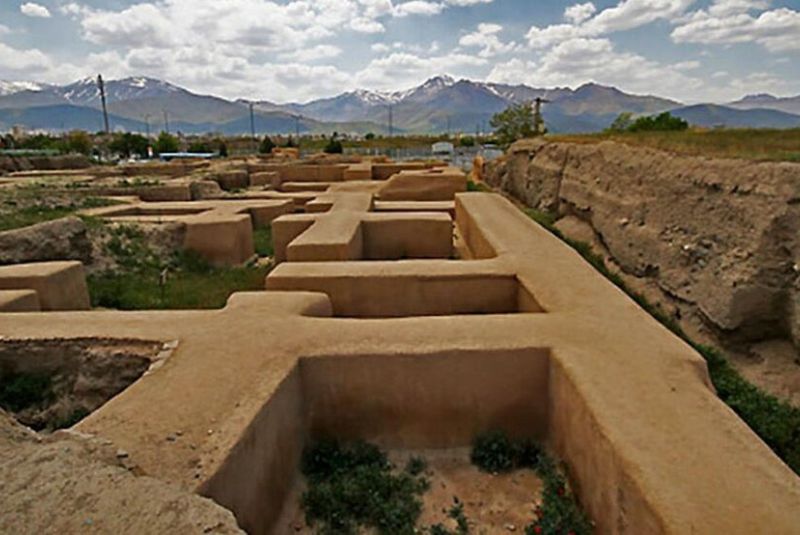
Fortresses and Palaces
Hegmataneh was designed as a vast, beautiful, and highly fortified palace. The architects constructed it as seven interconnected and nested fortresses. Residential buildings were likely adjacent to these fortresses, with historians suggesting that this was due to Deioces' request for the Medes to move near the royal palace.
Each fortress had a specific function, with the seventh, innermost fortress serving as the royal palace. Deioces imitated Babylonian palaces by ordering each fortress’s battlements to be painted in distinct colors.
A Greek historian described the royal palace as adorned with gold and silver, with intricate carvings and numerous decorations on doors, colonnades, and columns. Every part of the palace, he noted, was lavishly decorated.
Residential Units
Archaeological excavations that began in 1983 revealed extensive mudbrick architecture, designed with sophisticated engineering and pre-planned layouts. The residential units measured 5.17 by 5.17 meters, each with a porch, central hall, side rooms, and two small storage rooms. These units were symmetrically arranged with 3.5-meter-wide passages between them, forming a grid with alleys every 35 meters.
Defensive Structures
The architecture was protected by walls with square towers at 90-meter intervals. These structures likely date back to the Parthian period, possibly built over older foundations. Further extensive fieldwork and scientific studies are needed to confirm this.
Water Supply Network
Excavations uncovered an advanced and orderly water supply network. Channels were strategically placed, with 3.5-meter-wide pathways between them. These pathways ran from the northeast to the southwest and were paved with uniform square bricks.
Notable Artifacts of Hegmataneh
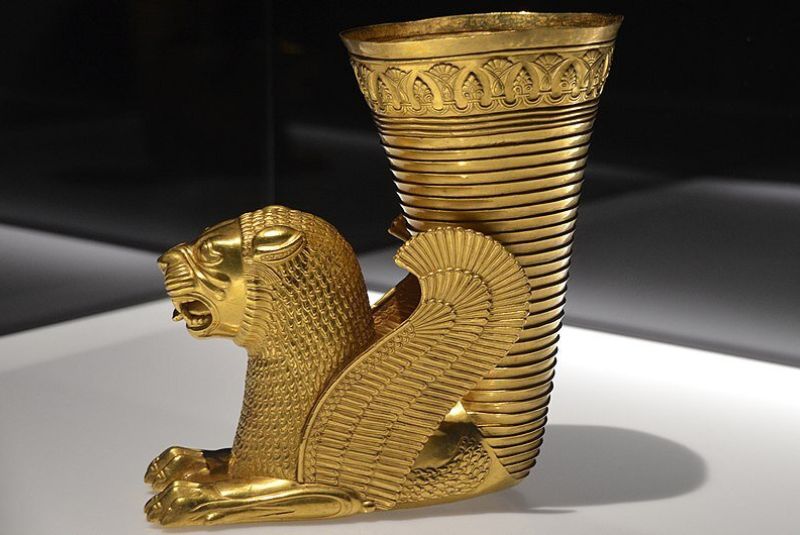
Numerous significant artifacts have been found in Hegmataneh, including:
- Arsham's Golden Tablet: A 13 by 8 cm gold tablet with inscriptions in cuneiform from the Achaemenid period, currently held by an American private collector.
- Ariaramnes' Golden Tablet: The oldest discovered artifact from Hegmataneh, a 12 by 8 cm tablet with 10 lines of Old Persian cuneiform, displayed in the Berlin Museum.
- Darius II's Golden Tablet: Two tablets with 23 and 29 lines of cuneiform inscriptions, now in the National Museum of Iran.
- Golden Rhyton and Silver Bowl: Artifacts from the Achaemenid period, including a lion-shaped rhyton and a silver bowl of Xerxes I, found in Hegmataneh.
- Silver Cup of Artaxerxes I: A silver cup with cuneiform inscriptions from Artaxerxes I, held in the Metropolitan Museum of Art.
- Stone Column Base of Artaxerxes II: A stone column base with cuneiform inscriptions, found at Hegmataneh and now in the National Museum of Iran.
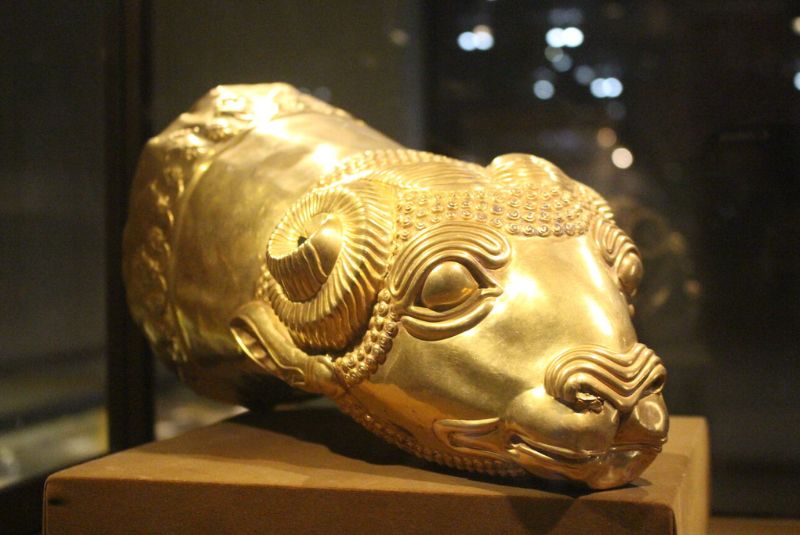
Places to See in Hegmataneh
Hegmataneh Museum
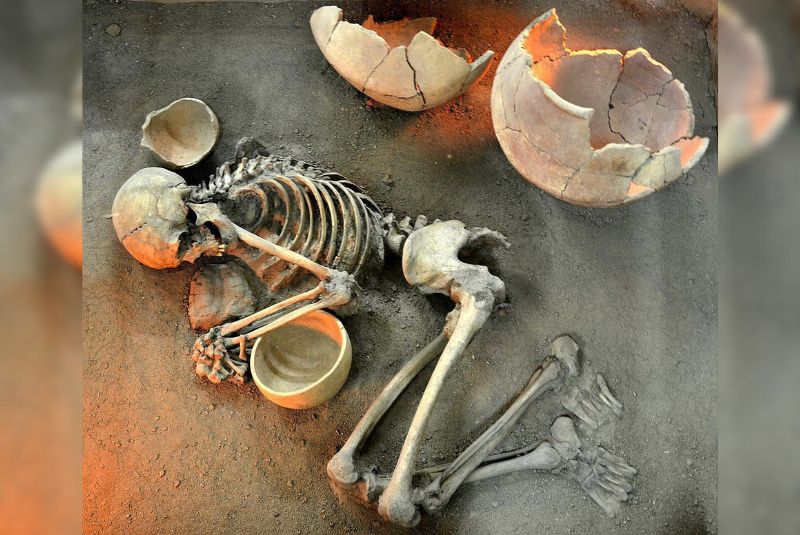
The Hegmataneh Museum is part of the historic Hegmataneh Hill complex. Initially established as a six-class school between 1941 and 1946, it was repurposed in the 1970s for archaeological research. In 1993, it became a repository for discovered artifacts and was renovated to accommodate 200 objects on display. The museum covers 600 square meters and includes an exhibition hall, restoration workshop, technical design studio, and photography workshop.
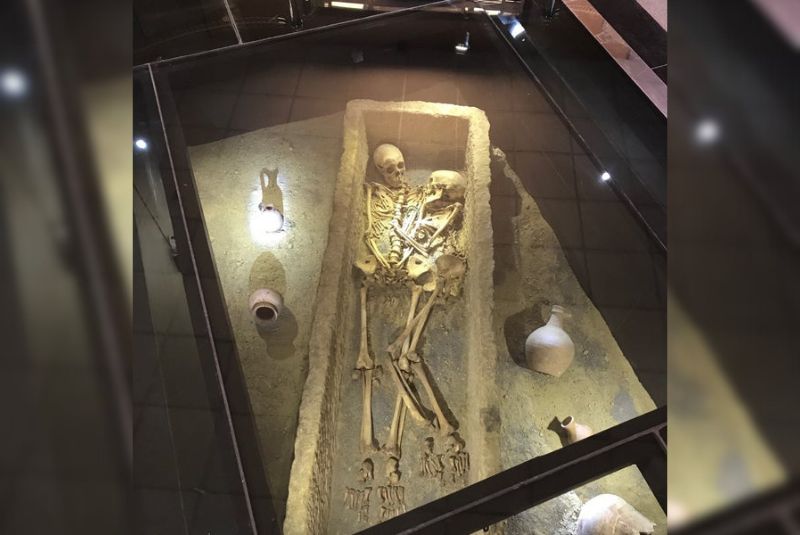
Artifacts: The museum's collection is divided into historical and Islamic sections. The historical section features items such as stone columns, pottery, glassware, clay statues, and decorative stones from the Achaemenid, Parthian, and Sasanian periods. The Islamic section includes ceramic dishes, tombstones, and various pottery jars from early to late Islamic eras and contemporary periods.
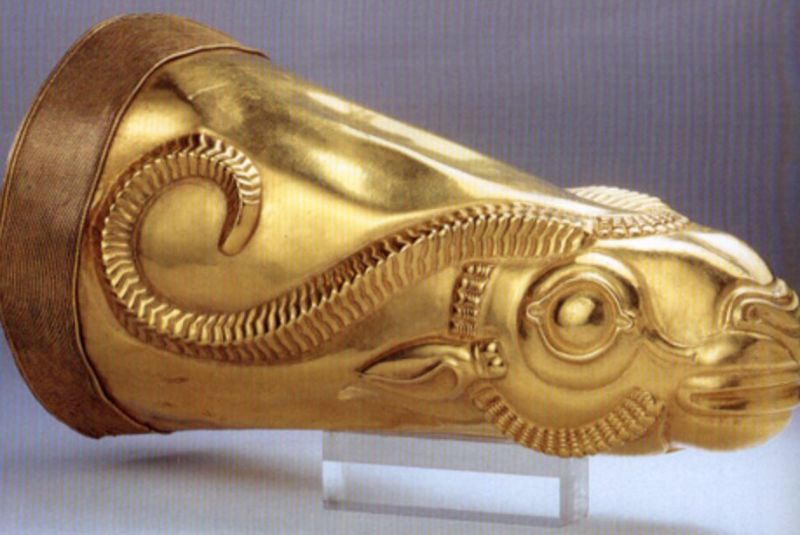
Hegmataneh Churches Complex
St. Gregory Stepanos Church
Located in eastern Hegmataneh, this church was built by Armenians who migrated to Hamadan during the First World War. St. Gregory Stepanos Church, an Iranian national heritage site, was rebuilt in 1932.
The brick interior and mudbrick exterior feature arched niches, a circular bell tower, and 12 arched windows. The church includes a main hall, library, entrance area, bell tower, main hall for Armenian gatherings, altar, confession room, and rooms for religious ceremonies.
Evangelical Armenian Church
Constructed in 1885 and completed in 1886, this church was later converted into a museum due to the emigration of Armenians. The 300 square meter church has a modern section with a balcony, entrance area, side rooms, staircase, and religious hall.
The older section includes a hall with four round brick columns, load-bearing walls with nine arches, and an altar with a gabled arch. Important figures like Hartoun Petrosian and Mgrditch Khan Zohrabian are buried here.
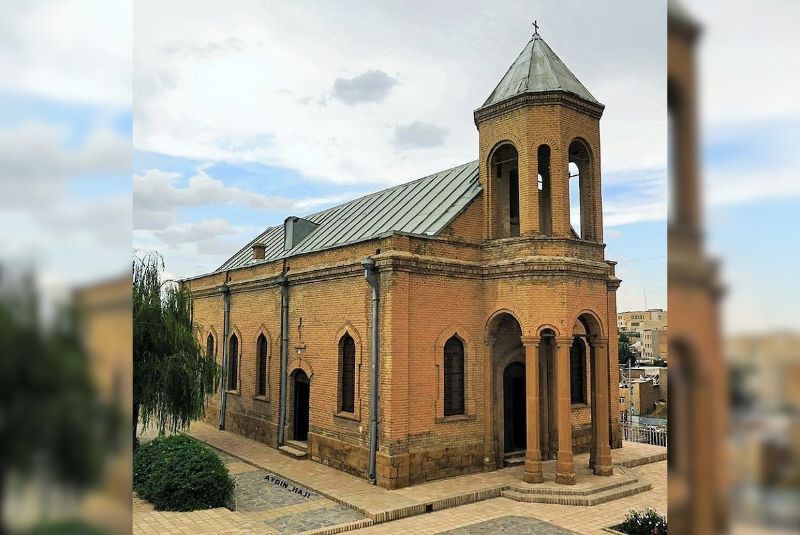
Gregory's House
Located to the east of the Armenian Church, this historic 100-square-meter house, with two floors and five semicircular wooden windows, remains partially preserved.
Noor School
Originally destroyed by fire in 1941 and rebuilt in 1942 by engineer Nshan Leonian, Noor School ceased operations in 1958 due to the Armenian migration. The rectangular-plan school, supported by six stone columns, comprises seven classrooms in one floor.
Cemetery
Situated to the east of the Protestant Church, the cemetery contains numerous tombstones with inscriptions, including marble gravestones with Assyrian script.
Attractions Near Hegmataneh
Tomb of Avicenna

The Tomb of Avicenna, a symbol of Hamadan, is set on a 3,090-square-meter plot with an area of 1,792 square meters. The lush greenery around the tomb enhances its historical charm.
Avicenna, also known as Ibn Sina, passed away and was buried here after his residence in Hamadan. The tomb is a blend of ancient Iranian and Islamic architecture, housing a museum and library in its north and south halls. It was registered as a national monument in 1997 and attracts thousands of visitors annually.
Alaviyan Dome

The Alaviyan Dome, dating from the medieval Islamic period (6th and 7th centuries AH), is a significant example of Iranian architecture. Originally located in a small school within the old city fabric, it was later freed from its surroundings, allowing for further exploration.
The dome was named in honor of the Alaviyan family, notable descendants of Ali (AS). Unfortunately, the dome has collapsed over time, leaving no remnants. It was registered as a national monument in 1931.
Hamadan Historic Bazaar
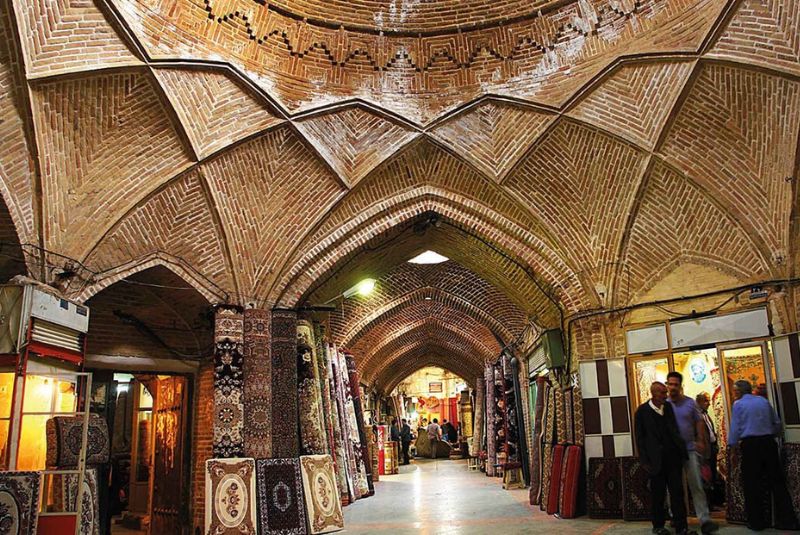
The Hamadan Historic Bazaar is one of Iran's renowned traditional markets, mostly dating back to the Qajar era. Covering 30,000 hectares, it is one of Iran's largest bazaars. Its unique features earned it a spot on the national heritage list in 1998.
Walking through the various sections of the bazaar provides not only shopping opportunities but also a chance to view some of Hamadan’s historical landmarks. Notable sections include the Prophet's Bazaar, Golshan Bazaar, Nahavandi Bazaar, and Mirza Kazem Bazaar.
Best Time to Visit Ecbatana City

The ideal times to visit Hegmataneh Hill in Hamadan are during the spring and early autumn. In early spring, the city still has a slight chill, leading to fewer tourists, while late autumn and winter bring cold weather and precipitation, making sightseeing challenging.
Summer attracts many visitors, but it comes with the expectation of hot temperatures. For a comfortable experience with fewer crowds, spring and early autumn are the best choices.
Location of Hegmatana in Hamedan
Hegmataneh is located in Hamadan city center, on Ekbatan Street. It is an oval-shaped mound situated within the old part of the city. The southern and eastern sides are bordered by the Nazarkoh River, Hegmataneh Boulevard, and 24 Meter Sar-Ghazr, while the western side leads to the city market and the northern side extends to Elvand Boulevard.
How to Get There
To reach Hegmataneh from Tehran, travel approximately 320 kilometers, which takes about three to four hours. Upon arriving in Hamadan, head to Imam Khomeini Square, then drive along Baba Taher Street, switch to Alavian Boulevard, and reach Ekbatan Square. From there, enter Ekbatan Street to find the Hegmataneh historical site.
Opening Hours and Ticket Price
From 8:00 AM to 7:00 PM in the first half of the year; From 9:00 AM to 5:00 PM in the second half of the year. The ticket price is 30,000 Toman.
Bottom Line
The ancient city of Ecbatana is a vital archaeological site in Iran, attributed to the Medes and it served as the medes capital. It is also rich in artifacts from the Achaemenid and Parthian periods.
Known for its sophisticated engineering, including complex fortifications, residential units, and advanced water systems, Ecbatana offers a fascinating glimpse into ancient history and culture. If you have an interest in the rich historical and cultural heritage of Iran, a visit to Ecbatana in Hamadan is highly recommended.
Share your story!
Comment below and let us know about your Experience.
Your story inspires others!


Comment
Leave a Comment